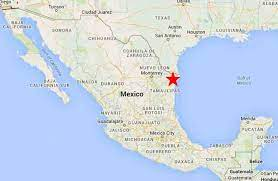Memories continued: What has been Mexico? (June 26, 2002)
When thinking of Oklahoma, one thinks of the heartland of the United States of America in the year 2002. Back in 1982, I had no reason to think otherwise. Judging from a map in 1847, however, Oklahoma was known as unorganized Indian Territory1. This huge swath of the plains loosely deemed as US property from the time of the Jefferson purchase, made possible by Napoleon at the turn of the 19th century, carried up to the present day borders of Canada to the north. To the south, it reached to the present day border of Texas until the eastern side of the panhandle. The much larger than the present 1847 Texas territory extended up from its panhandle to the north, a good measure beyond the present Oklahoma panhandle creating a skinny strip that would reach all the way up through Colorado and Wyoming to today’s Yellowstone park on the border with today’s Idaho.
Little did I know back then that I would spend five years living in the present day state of Utah as an adult, which was a part of Mexico when first colonized by the Saints in the summer of ‘47. I was also unaware of eventually following my parents’ stay in southern California and end up living here for at least four years (up until at least spring 2003, projected). The entire state of California, as well as Nevada, Arizona, Utah, most of New Mexico, and parts of Wyoming and Colorado were all possessed by Mexico in 1847. The Mexican-American War under Polk changed most of that in favor of the United States. But this does not erase the historical or cultural foundations of much of these places, based on Spanish missions, hacienda ranches, and ethnically diverse Latinos and natives settling across the vast northern Mexican frontier.
In 2002, there are literally millions of Mexicans inhabiting the western states, including Washington and Oregon and of course Texas not to mention many urban and rural parts of the Midwest and eastern seaboard. Simply due to a conflict of sovereignty 150 years ago, the heritage of much of the United States cannot be forgotten simply due to Anglo-Saxon/African American (and now add Asian) newcomers creating their own brand of American constitutional manifest destiny. The US forefathers, highlighted by Monroe, claimed the entire new world under its influence, because the 13 original colonies formed an alliance and union that united power as seldom accomplished in the history of the world. A power built to upsize. This newly formed republic did eventually map out its space, from the Spanish in Florida and Puerto Rico, to the French in the great white north and the east, to the Russians in the northeast, and the varieties of Europeans and natives across the lands and seas. By 1950 it had consumed enough space to sate its appetite. Fifty nifty sounds better than forty-eight all first rate.
So the US inevitably ends up defining much of Mexico, the last act being the Gadsden Purchase of 1854. Largely forgotten by us northerners are the border states of Sonora, Chihuahua, Coahuila, Nuevo Leon, and Tamaulipas. I leave Baja Norte from the forgotten list because enough southern Californians and other Americans recognize it as a real “place” (mostly due to Tijuana) that it is popular on a conscious level. But of the other five Mexican Border States, two of them are not recognized by the Autocratic Republic of Microsoft, lead so imperiously yet surreptitiously by Lord Emperor Gates himself!
I should also mention that Mexico had to fight for its independence from the formidable European powers of France and Spain, not to mention the inevitable infighting among the numerous native peoples over its violent history.
So enough of what I didn’t know, and enough of these history lessons that I’ve learned more of since. What did I know? Certain myths of Mexico and some images and stories I had previously absorbed. Some maps, movies, cartoons, and maybe a few artifacts. 1982 gave me a taste of the real thing, and it was in a border town called Matamoros.

No comments:
Post a Comment